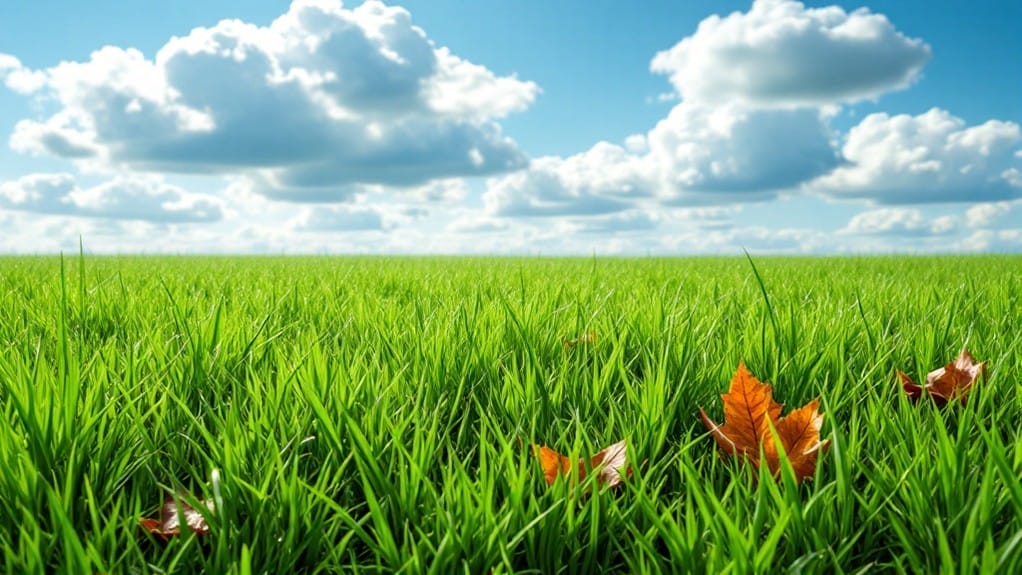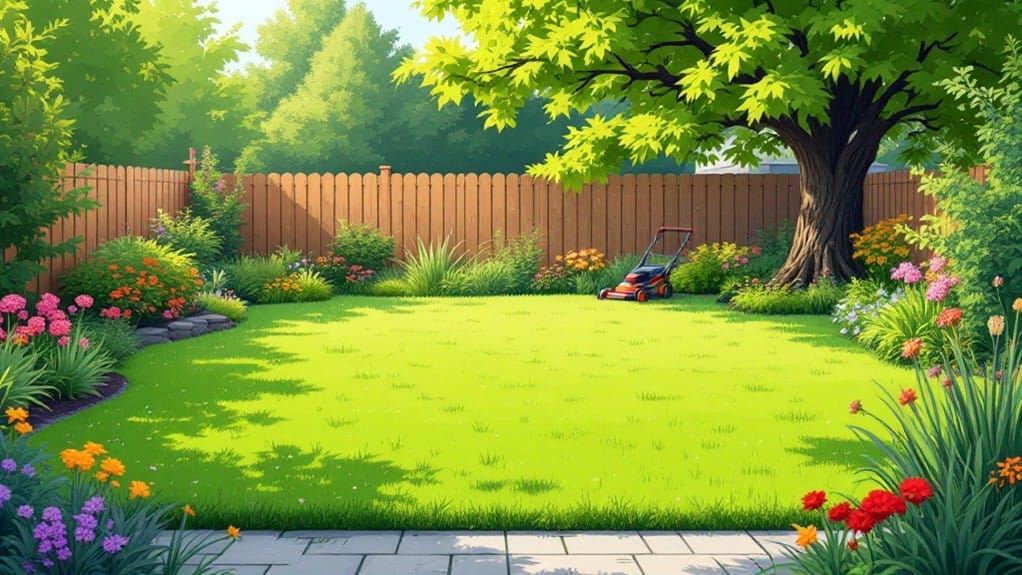You should mow your lawn in Ottawa every 7-10 days in spring, when cool-season grasses like Kentucky bluegrass and perennial ryegrass are growing rapidly. During summer, mowing frequency varies; cool-season grasses require mowing every 10-14 days, while warm-season grasses like fine fescue and tall fescue need mowing every 7-10 days. In fall, you'll mow every 10-14 days as growth slows. Factors like grass type, mower type, soil moisture, and sun exposure also impact your mowing schedule. By understanding these nuances, you'll be able to tailor your lawn care routine to the unique needs of your Ottawa lawn, leading to ideal results.
Understanding Ottawa's Climate and Grass

Ottawa's climate is characterized by cold winters and warm, humid summers, with significant precipitation throughout the year. As you maintain your lawn in this region, you'll need to take into account the impact of the climate on your grass.
The type of grass you have plays an important role in determining its growth pattern and mowing needs. Cool-season grasses, such as Kentucky bluegrass and perennial ryegrass, thrive in Ottawa's climate, growing rapidly during the spring and fall. However, they may go dormant during the hot summer months.
Warm-season grasses, like fine fescue and tall fescue, also grow well in Ottawa's climate, but they're more tolerant of heat and drought. Understanding the specific needs of your grass type is vital to maintaining its health and appearance.
The climate impact on your lawn is significant, with precipitation and temperature fluctuations affecting growth rates. By choosing a grass type that's suitable for Ottawa's climate, you can guarantee a lush, vibrant lawn with minimal maintenance.
Take into account factors like soil type, sunlight, and moisture levels when selecting a grass type, and adjust your mowing schedule accordingly.
Lawn Mowing Frequency by Season

As you adjust your lawn care routine to accommodate Ottawa's climate and your grass type, you'll need to contemplate how often to mow your lawn during different seasons.
In the spring, you should mow your lawn every 7-10 days, as the rapid growth rate during this period requires more frequent mowing to maintain lawn health. During this season, the goal is to promote healthy growth by allowing the grass to grow 2.5-3 inches tall before mowing.
In the summer, the frequency of mowing depends on the type of grass you have. Cool-season grasses, such as Kentucky bluegrass and perennial ryegrass, require less frequent mowing, every 10-14 days, while warm-season grasses, like zoysiagrass and buffalograss, need to be mowed every 7-10 days.
During the fall, you should mow your lawn every 10-14 days, as the growth rate slows down. In the winter, you typically won't need to mow your lawn, as the grass is dormant.
Factors Affecting Mowing Schedule

In addition to seasonal growth patterns, several factors will influence your lawn mowing schedule in Ottawa. The type of mower you use is one consideration. Different mower types have varying cutting capabilities, affecting how often you'll need to mow.
For instance, a mulching mower may allow for less frequent mowing, as it chops clippings into fine particles that act as a natural fertilizer, promoting healthy growth. On the other hand, a reel mower may require more frequent mowing, as it cuts the grass more cleanly but doesn't handle taller grass as well.
Grass height also plays a significant role in determining your mowing schedule. Maintaining a height of 2.5 to 3 inches is generally recommended for most cool-season grasses found in Ottawa. You'll need to mow your lawn more frequently if you prefer a shorter grass height.
Conversely, if you maintain a taller height, you can go longer between mows. Additionally, factors like soil moisture, sun exposure, and lawn usage will also impact your mowing schedule. Taking these factors into account will help you develop a suitable mowing schedule for your Ottawa lawn.
Conclusion
You've got a good grasp of Ottawa's climate and grass types, and you know how often to mow your lawn by season. Now, consider factors like weather conditions, grass height, and mower type to adjust your schedule. By mowing your lawn at the right frequency, you'll maintain its health, promote growth, and enhance its appearance. Regular mowing also helps prevent weed growth and reduces the need for herbicides and other chemicals.


